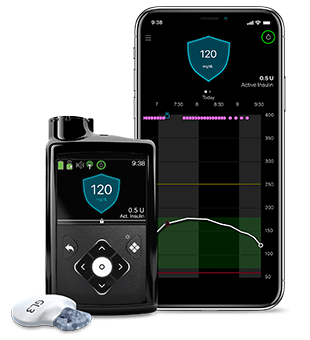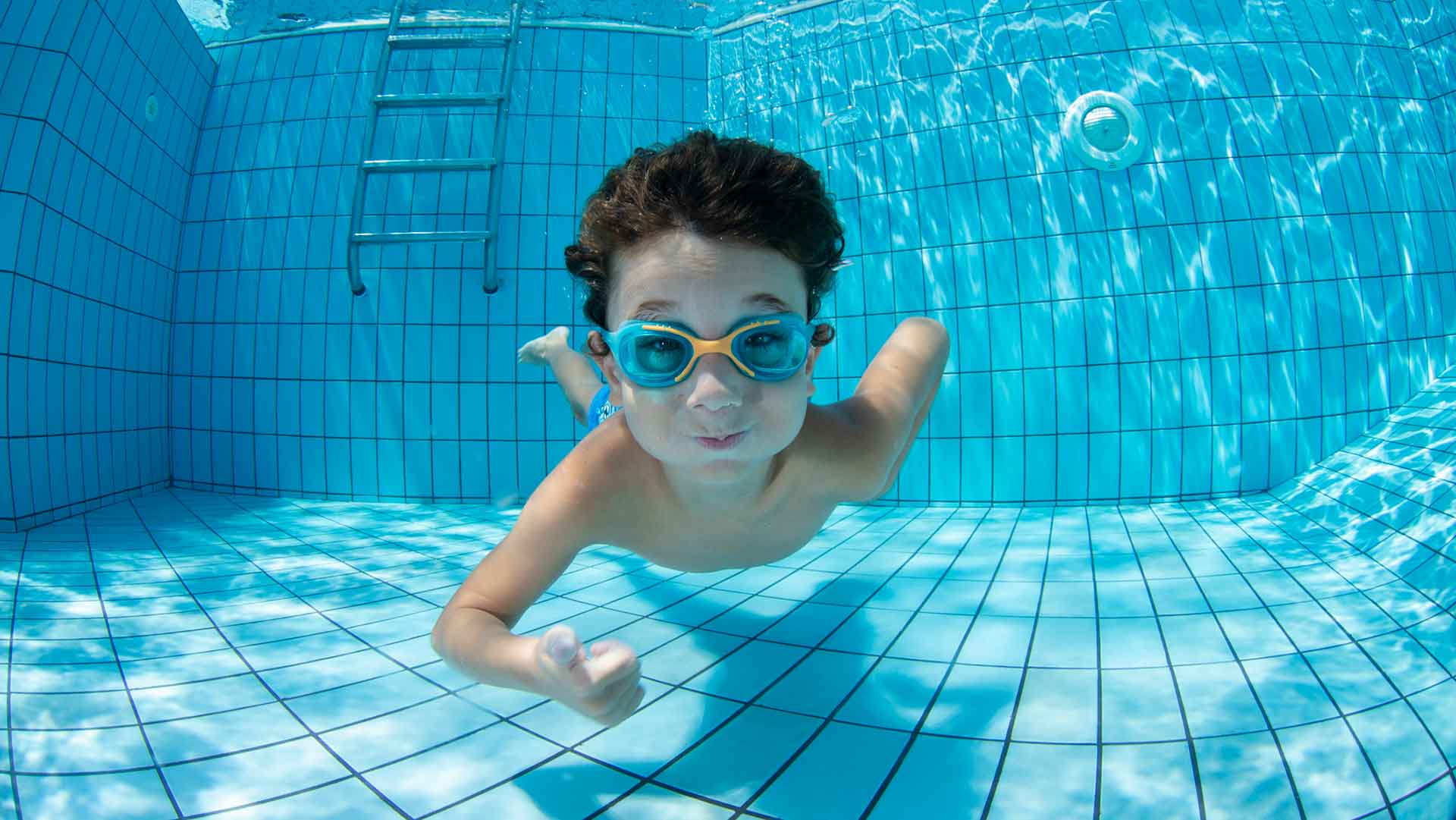Having diabetes should not stop your child from swimming.
In fact, there’s a relationship between swimming and type 1 diabetes. It’s proven that activities like swimming help increase insulin sensitivity and improve emotional and mental health.
And what’s best, your child can swim with an insulin pump, if it’s the right one. It used to be that children using insulin pumps would have to detach the pumps for up to an hour while swimming. But, there are now waterproof insulin pumps that children can wear even while in water.
This post goes over some of the benefits of swimming, the different types of waterproof insulin pumps, and some considerations before disconnecting an insulin pump, if you need to.
Is Swimming Safe for Children with Diabetes?
As mentioned earlier, swimming can help relieve stress and is safe for children with diabetes. Kids may also want to swim because of the following benefits.
- Enhanced Muscle Strength
Swimming improves children’s muscle tone, endurance, and overall muscle strength. This can result in an increase in the degree of insulin sensitivity.
- Increased Heart Strength
During swimming, almost all major muscles are at work. The continuous movement of all major organs in the body gets the heart to pump more blood to body parts, lowering the risk of high blood pressure.
- Improved Emotional and Mental Health
Swimming benefits are not limited to physical health. It helps to improve children’s emotional and mental health. Swimming releases endorphins that enhance the mood, help a child relax and may decrease feelings of depression and anxiety.
Waterproof Insulin Pumps
Even though most insulin pumps work well when they come in contact with water for a short period of time, the following pumps have been confirmed to be waterproof.
(For a more general overview of insulin pumps, check out our article on the Best Insulin Pumps for Children With Diabetes in 2022.)
Omnipod DASH

This insulin pump is automated, durable, and waterproof. It has a waterproof rating of IP28, allowing children and adults of all ages to use it, even underwater. Omnipod DASH maintains optimum functions when it goes as low as 25 feet (7.6m) underwater for an hour.
If swimming takes over an hour, though, you’ll need to monitor your kid’s levels because there may be interruptions in insulin delivery.
Also, important to keep in mind is that since this pump doesn’t use any tubing (the insulin pod sticks to the skin), the adhesives that help the pod stick can weaken with time in the water. For this reason, parents need to check from time to time, to be sure the pod is still intact.
Tandem T-slim X2 pumps

Tandem T-slim pumps are not waterproof; they are watertight. This means that the pump was designed in a way that makes water unable to enter. So, it makes them safer when a child is bathing or in cases of accidental submersion. But what about swimming?
Children can swim with this pump when the water depth is 3 feet (0.914m) for less than 30 minutes.
However, to be sure children are completely safe, tandem pumps can be used with waterproof pump cases to avoid water damage.
The Aquapac waterproof insulin pump case is a good option, with a waterproof rating of IPX7. Using this case ensures that the insulin pump is safe and remains connected when underwater.
Dana Diabecare R

Dana Diabecare R is claimed to be the lightest and most compact pumping system. These features increase the comfort of a child when swimming.
It has a waterproof rating of IPX8, which allows children to stay up to 9.8 feet (3m) below water for up to a day (not that they would, of course).
Also, the insulin pump site can be covered with a waterproof bandage for extra protection.
Many parents prefer Dana Diabecare R because it has a built-in blood glucose meter that automatically communicates the result. For this reason, there is no need to take an external blood glucose monitor, as parents can access the readings when the child is swimming.
However, this insulin pump is only compatible with U-100 insulin.
Omnipod 5

Omnipod 5 is the latest available insulin pump.
It’s the lighter, smaller, slimmer version of the Omnipod DASH. This pump system also has a waterproof rating of IP28 and can stay underwater 25 feet (7.6m) below for an hour.
Additionally, it’s ideal for kids with type 1 diabetes, especially those above six years. Since it requires no tubing, children can swim with it easily.
Furthermore, parents can control the Omnipod 5 using their smartphone. However, the available software is only compatible with some android phones.
If you wish to use the Omnipod 5 with any device, feel free to try Gluroo, our collaborative diabetes management app. It connects with Omnipod 5 and other insulin pumps and it’s available for every device.
Medtronic MiniMed

Medtronic MiniMed is the only insulin pump in the market with the SmartGuard technology.
Its best feature is probably its ability to read blood glucose levels every five minutes and alert you if it deviates from the pre-set normal.
According to Medtronic MiniMed, the insulin pump functions 12 feet below water for up to 24 hours. However, it is often categorized as splashproof and not waterproof. For this reason, parents need to buy a waterproof insulin pump case if they want their kids to wear this pump when swimming.
Also, it’s important to note that exposing insulin pumps to high temperatures for extended periods of time may hurt the insulin content or even the device itself. The pool’s temperature must be regulated for kids to swim.
If you’d like to know more about insulin pumps, take a look at the Best Insulin Pumps for Children.
What if Your Child’s Insulin Pump is Not Waterproof?
If your child’s insulin pump is not waterproof, you should disconnect it before swimming.
Disconnecting an insulin pump for about one hour is safe, and some studies suggest that disconnecting the pump for 6 hours is still safe.
However, disconnecting your child’s insulin pump may come with some dangers. The most common one being Diabetic ketoacidosis (DKA). It’s a complication of diabetes that occurs when there is a deficient level of insulin in the body.
The condition is triggered by a prolonged uncontrolled drop in sugar levels that causes the liver to burn body fat into blood acids (ketones).
But let’s take a look at how you can safely disconnect an insulin pump to allow your kid to go swimming.
Disconnecting the Pump
Disconnecting an insulin pump is easy and takes just a few minutes. You’ll need to use a solvent to remove the adhesives and tapes. Then you’ll carefully lift them off the site. But, it’s essential to:
- Deactivate the pump before disconnecting. This prevents the incidence of it delivering insulin when it is not in use.
- Check blood glucose levels before disconnecting a child’s insulin pump. Ensure that the glucose level is normal to prevent complications.
- Keep the insulin pump safely in a waterproof case nearby.
- Monitor the child’s glucose level after every hour. If it is high, administer a bolus dose to lower it. When the glucose level is normal, disconnect it, and swimming can continue.
- It is essential to clean the area with an alcohol swab before replacing the pump. This helps to limit the risk of contamination.
- Finally, you should consider informing your child’s doctor before disconnecting the pump, especially if it’s the first time.
Preparing Your Child to go Swimming
Just like other aerobic exercises, it’s crucial to prepare your child before going swimming. This enables parents to manage cases of emergencies effectively.
- Because children burn calories as they swim, eating food rich in protein, fat, and carbohydrate is essential. Also, your kid must have snacks at hand if the swimming session is predicted to go on for a long time.
- Your child must take mini breaks after every few laps to prevent burning too much energy or excessively lowering glucose levels.
- You may not know that swimming increases perspiration, increasing the risk of dehydration. Remember to keep your child hydrated by taking a bottle of water along when going to the pool.
- Bring along an extra insulin pump, blood glucose monitor, batteries, adhesives, tapes, and other supplies to serve as backup.
Keep an Eye On Your Child During Swimming
So as we’ve seen, there are many ways in which your child can benefit from swimming, and luckily, he/she can swim with an insulin pump if it’s waterproof!
And if the insulin pump can’t be submerged in water, it’s safe to use a waterproof pump case or disconnect the pump altogether.
If you want to be able to closely monitor your kid’s levels while swimming or doing any other activity away from you, you might want to try Gluroo! Our collaborative diabetes management app connects with insulin pumps and CGMs, aside from many other features, to make managing a child’s diabetes simpler for everyone involved.





